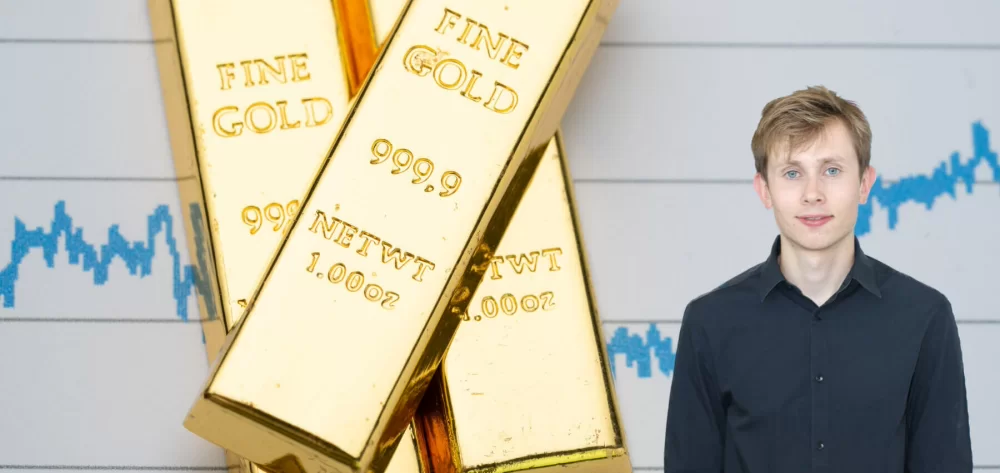Many investors swear by gold during unstable times. Inflation, war, stock market crashes – disasters boost the rare metal’s value rather than hurting it, in their opinion. There may be some rational explanations for that logic, one of which is the fact that gold is not available in unlimited quantities. As with all limited resources, high demand results in high prices. And unlike fiat currencies, gold has intrinsic value as a material.
But is the metal really worth its weight in gold when it counts, or is its reputation as a safe haven more myth than reality? To answer my own question, I took an in-depth look at how different investments endured the three biggest crises of this still-young millennium. My goal was to find out which asset delivered the most value for investors through those turbulent times.
Accurately defining a crisis and its length is difficult because a crisis has many layers. That is why I must humbly admit that my process would not likely hold water against scientific inspection. But for the sake of simplicity, I defined entire calendar years as crisis years. I based my examination on these three crises:
Table 1: Financial crises of the 21st century
| Crisis |
Years |
| Dotcom bubble, 9/11 |
2000-2002 |
| Global financial crisis |
2007-2009 |
| Corona pandemic |
2020-2021 |
Once I had defined the crisis years, I then looked at how different asset classes had performed in those years, and adjusted the performance to Swiss francs when necessary. These are the asset classes I looked at:
- Swiss savings accounts, as per the average interest rates
- Swiss stocks, as per the Swiss Performance Index (SPI)
- US stocks, as per the S&P 500 index
- Gold, as per the LBMA spot price
- Silver, as per the LBMA spot price
- Swiss real estate, as per the SWX IAZI Private Real Estate Price Index
The stock index performance figures account for dividends. I did not account for brokerage fees and other investment-related costs. I also did not account for inflation.
Gold has lived up to its reputation – depending on the time frame
A look at the results of my research shows that gold’s reputation did not come out of nowhere. Across all three financial crises, gold delivered nominal gains in Swiss francs (see Table 2). Its performance during the Global Financial Crisis was particularly notable.
Table 2: Performance of different asset classes in crisis years
| Asset |
Performance in CHF
(2000-2002) |
Performance in CHF
(2007-2009) |
Performance in CHF
(2020-2021) |
| Swiss savings accounts |
4.14% |
1.99% |
0.05% |
| Swiss real estate |
3.63% |
14.82% |
9.41% |
| Gold |
2.33% |
47.52% |
12.64% |
| Silver |
-24.15% |
11.87% |
20.58% |
| Swiss stocks (SPI) |
-35.39% |
-18.80% |
28.10% |
| US stocks (S&P 500) |
-45.81% |
-28.60% |
43.63% |
Sources of performance data: Investing.com, Finance.yahoo.com, Lbma.org.uk, and moneyland.ch.
Color code: Dark green >= +20%, green: 10%-20%, light green: 0%-10%, light red: -10%-0%, dark red: <-20%.
During the corona crisis, the gains in the gold price were relatively moderate, at least compared to Swiss and US stocks. A point that stood out to me is that stocks radically lost value over the first two crises, whereas in the corona crisis, the stock market recovered very quickly after the initial shock.
Gold leads in this millennium
A close look at the long-term performance of different asset classes is at least as interesting, because in reality, not everybody sells their investments when crises hit.
For diversified stock portfolios in particular, having a long investment term is the definitive key to success. So finding out that gold also performed better than both the Swiss and US stock markets over a long term came as a surprise (see Table 3). At least in this millennium, gold has proven its worth as a profitable long-term investment despite short-term fluctuations. That trend seems set to continue through 2024, with the gold price having repeatedly attained new historic highs this year.
Table 3: Performance of different asset classes between 2000 and 2023
| Asset |
Performance in CHF
(2000-2023) |
Performance in USD
(2000-2023) |
| Gold |
275.07% |
610.56% |
| Swiss stocks (SPI) |
190.10% |
|
| US stocks (S&P 500) |
170.29% |
410.92% |
| Silver |
135.60% |
346.34% |
| Swiss real estate |
116.96% |
|
| Swiss savings accounts |
10.78% |
|
Sources of performance data: Investing.com, Finance.yahoo.com, Lbma.org.uk, and moneyland.ch.
But those figures should not be taken as a reason to go out and catch gold fever. While it is possible that the gold price will continue to go up, continued gains are not a law of nature. For example, the price of gold declined steadily over the 20-year period between 1980 and 2000.
Not all that is gold glitters
Gold’s performance depends heavily on the time frame used. Compared to the astounding performance of the S&P 500 since that stock market index was first established, the growth in the gold price seems puny (see Table 4). The SPI too has multiplied in value many times since early 1988.
Table 4: Performance of different asset classes between 1988 and 2023
| Asset |
Performance in CHF
(1988-2023) |
Performance in USD
(1988-2023) |
| US stocks (S&P 500) |
2577.92% |
3933.99% |
| Swiss stocks (SPI) |
1793.84% |
|
| Gold |
181.31% |
323.92% |
| Swiss real estate |
148.39% |
|
| Silver |
135.55% |
254.97% |
| Swiss savings accounts |
62.42% |
|
Sources of performance data: Investing.com, Finance.yahoo.com, Lbma.org.uk, and moneyland.ch
As with other precious metals, the price of gold fluctuates sharply, which is another argument against intuitively classifying it as a safe investment. And lastly, proper diversification is still the surest investment strategy. If you place all of your bets on just one horse, you risk taking heavy losses, even if you bet on a “safe haven” like gold.
Important note: The information in this article is provided for educational purposes only, and should not be considered investment advice. moneyland.ch does not accept any liability, financial or otherwise.
More on this topic:
How to invest in gold
Tips for buying physical gold bullion
How to invest in silver
How wars impact investments


 Deal of the Day
Deal of the Day 







